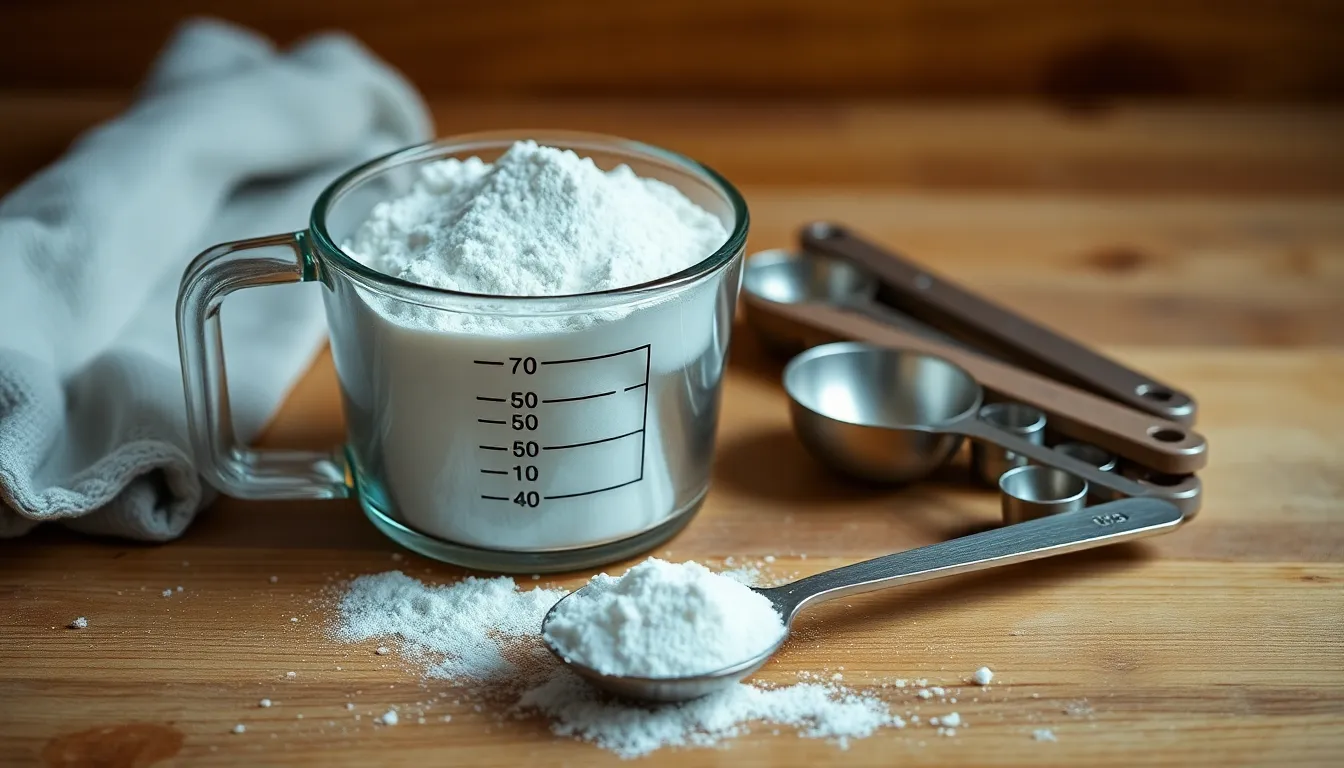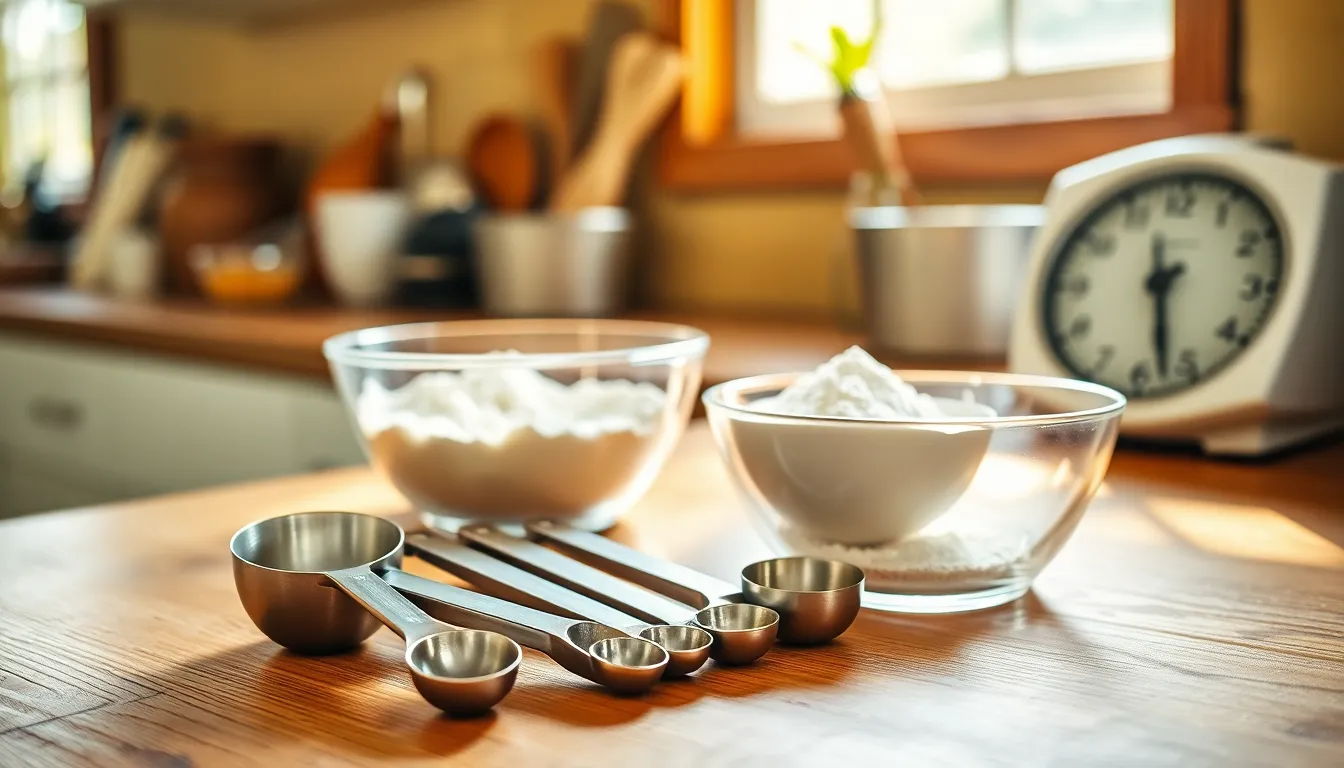Table of Contents
ToggleBaking can feel like a science experiment, and knowing how many teaspoons are in a cup is the secret formula to culinary success. Picture this: you’re all set to whip up that mouthwatering chocolate cake, only to find yourself staring blankly at a recipe that throws around measurements like a game of darts. Fear not! Understanding this conversion is easier than finding the last cookie in the jar.
In the world of cooking, precision is key, and knowing there are 48 teaspoons in a cup could save your dessert from becoming a disaster. Whether you’re a seasoned chef or a kitchen novice, mastering these measurements can make all the difference. So, let’s dive into the delightful world of teaspoons and cups, and turn that baking fumble into a triumph. After all, who doesn’t want to impress their friends with perfect treats?
Understanding Measurement Conversions
Understanding conversions helps ensure consistency in the kitchen. Accurate measurements create successful recipes and allow home cooks to duplicate results.
Importance of Accurate Measurements
Accurate measurements prevent culinary mishaps. When baking, precision influences texture, flavor, and overall success. One extra or missing teaspoon can turn cookies crispy instead of chewy. Novice and seasoned bakers both benefit from mastering measurement systems. It builds confidence and improves overall cooking skills, promoting better outcomes in each dish.
Common Cooking Measurements
Common cooking measurements include teaspoons, tablespoons, and cups. A teaspoon equals 1/3 of a tablespoon, while a tablespoon contains 15 milliliters. In the Imperial system, four tablespoons equal 1/4 cup. Understanding these relationships makes it easier to follow a variety of recipes. Many resources provide charts for quick reference on conversions. Using this knowledge ensures smoother cooking experiences and terrifically prepared meals.
How Many Tsp in a Cup?

Understanding the conversion of teaspoons to cups simplifies cooking and baking. The crucial measurement, 48 teaspoons in a cup, facilitates accurate ingredient handling for both novices and experts.
Standard Conversions
Standard cooking measurements help maintain consistency across recipes. In the U.S., one cup equals 48 teaspoons, making calculations straightforward. This conversion streamlines processes from measuring flour for a cake to adjusting spices in a sauce. Other related conversions include 1 tablespoon equaling 3 teaspoons, providing further clarity when adjusting quantities. Knowing these figures allows cooks to follow any recipe confidently.
Variations in Different Countries
Different countries may use varying measurement systems. In Australia, a cup equals 20 teaspoons, differing from the U.S. standard. The U.K. also has distinct measurement preferences, with a cup equating to 10 fluid ounces and slightly varying in spoon sizes. These disparities can lead to confusion, so understanding local measurements is essential. Familiarity with these differences ensures global recipes translate accurately, enhancing culinary experiences.
Practical Applications in Cooking
Mastering the conversion of teaspoons to cups enhances cooking efficiency. Knowing that one cup equals 48 teaspoons simplifies measurements for both novice and experienced cooks.
Recipe Examples
Baking a cake often requires precise measurements. For instance, a recipe may call for 2 cups of flour, which equals 96 teaspoons. To season a sauce, a recipe might suggest 1 teaspoon of salt. Understanding conversions lets cooks easily adjust ingredients to suit their taste.
Another example includes making homemade salad dressing. A typical recipe could require 1/4 cup of vinegar, translating to 12 teaspoons. Adapting these measurements keeps dishes consistent and flavorful.
Tips for Accurate Measurement
Using the right tools ensures accuracy. A set of measuring spoons provides precision for teaspoons and tablespoons. It’s important to level off dry ingredients when measuring to avoid excess or deficit.
Consistency matters in measurement techniques. Always use dry measuring cups for solids and liquid measuring cups for liquids. To enhance accuracy, weigh ingredients using a kitchen scale, especially for baking. Tracking conversions simplifies meal preparation, making cooking more enjoyable.
Tools for Measuring Ingredients
Accurate measurements are vital in cooking. Different tools help achieve this precision.
Measuring Spoons
Measuring spoons are essential for both dry and liquid ingredients. These spoons come in sets that typically include sizes—1 teaspoon, 1 tablespoon, and 1/2 tablespoon. Each spoon provides exact quantities, ensuring recipes turn out perfectly. Many spoons are made from stainless steel or plastic, offering durability and ease of cleaning. When measuring, it’s important to level off dry ingredients for accuracy. Liquid ingredients, on the other hand, should fill the spoon without overpouring. Understanding various spoon sizes improves cooking efficiency and assists in recipe adjustments.
Other Measuring Tools
Other measuring tools enhance ingredient accuracy beyond just spoons. Measuring cups represent another mainstay for fluid ingredients, with a one-cup measurement equating to 48 teaspoons. These cups usually come in both liquid and dry forms, catering to specific needs. Consider using kitchen scales for precision, especially in baking. Scales allow for weighing ingredients, providing consistent results regardless of volume discrepancies. Additionally, even small tools like measuring jugs for liquids and kitchen thermometers for temperature checks contribute to better culinary outcomes. All of these tools work together to ensure successful cooking experiences.
Mastering the conversion of teaspoons to cups is essential for anyone looking to elevate their cooking and baking skills. With 48 teaspoons in a cup, understanding this measurement can significantly enhance accuracy in recipes. It’s not just about following instructions; it’s about creating dishes that impress and satisfy.
By using the right measuring tools and techniques, cooks can ensure consistent results every time. Whether adjusting a recipe or experimenting with flavors, accurate measurements lead to culinary success. Embracing these concepts not only builds confidence in the kitchen but also transforms the baking experience into a more enjoyable and rewarding journey.







